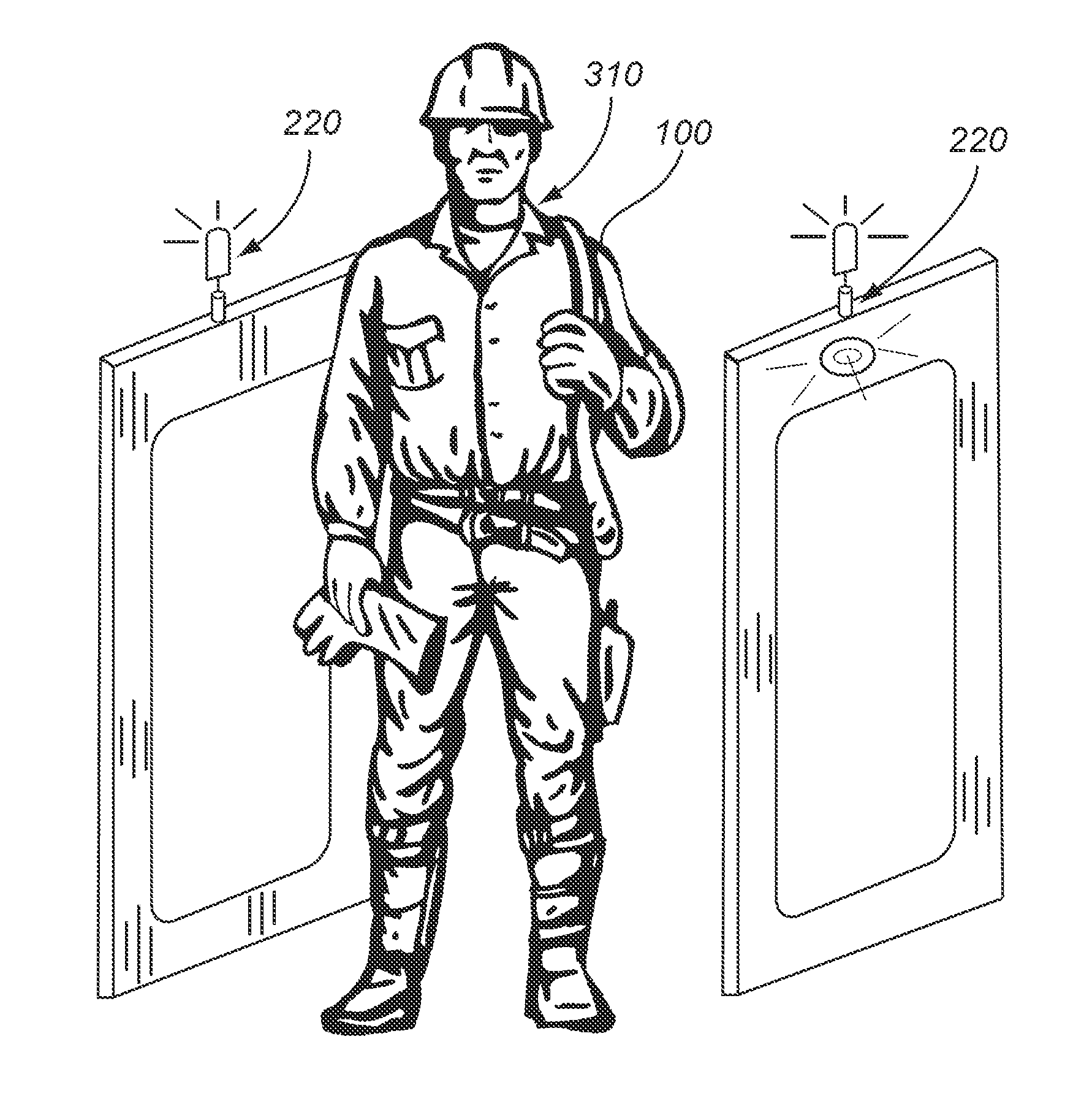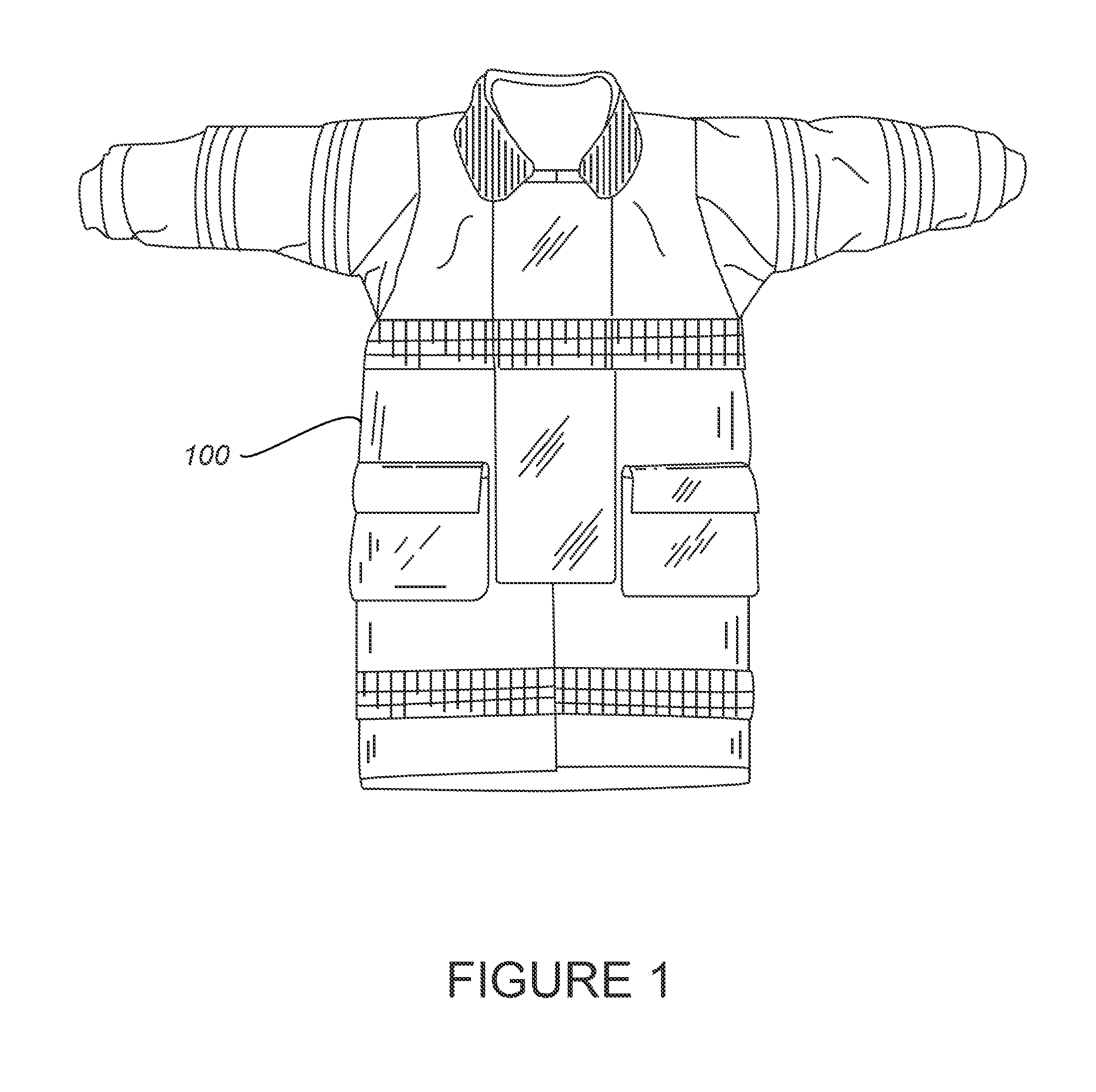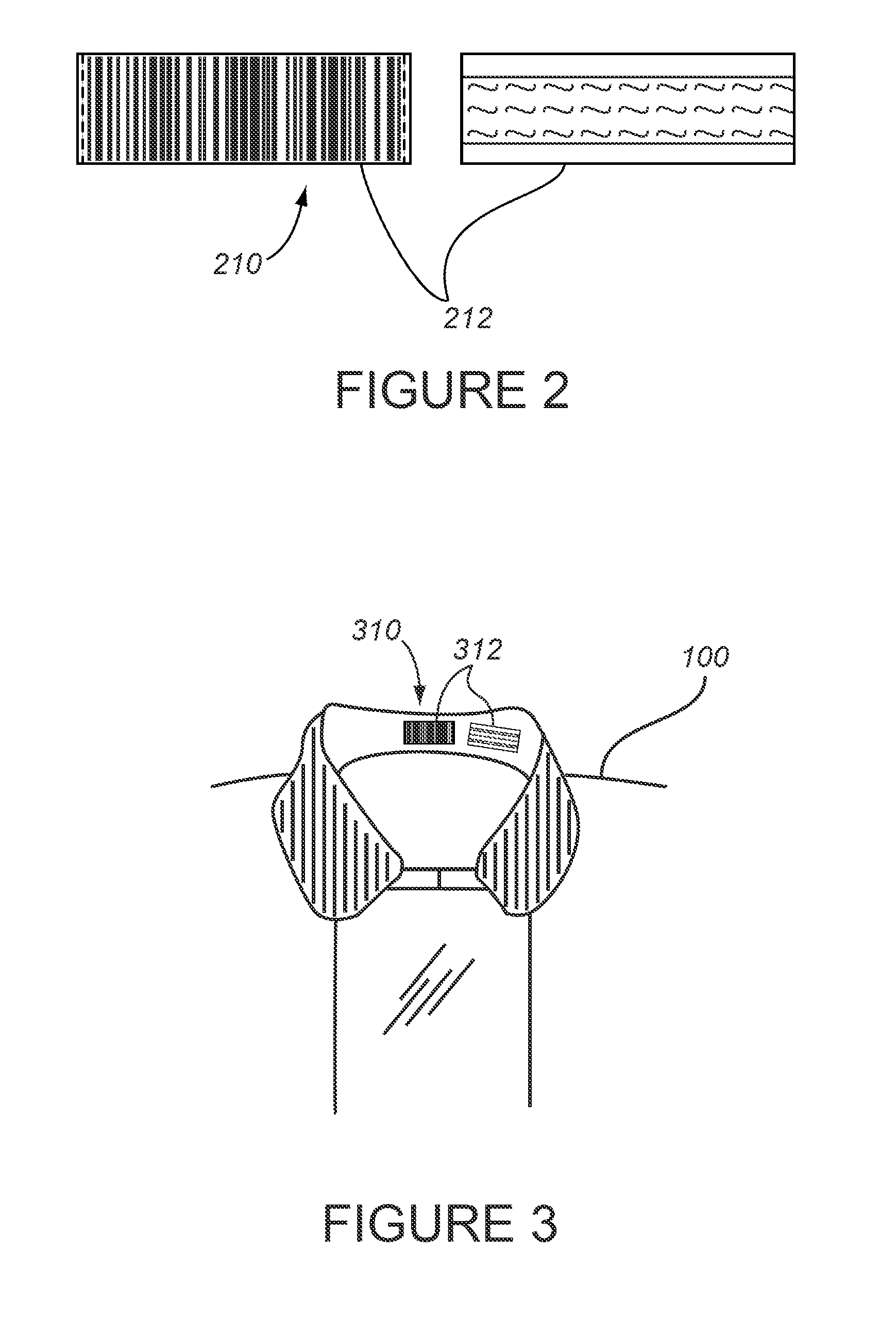Protective Fabrics and Garments
a technology applied in the field of protective fabrics and garments, can solve the problems of electrical service personnel, electrical utility linemen, industrial electricians, and electrical service personnel routinely exposed to momentary electric arc flash and its related thermal hazards, and many workers have been electrocuted, burned, or severely injured
- Summary
- Abstract
- Description
- Claims
- Application Information
AI Technical Summary
Benefits of technology
Problems solved by technology
Method used
Image
Examples
example 1
[0235]In this example, fabric samples were tested in accordance with ASTM International Standard Test Method F1959 to determine arc ratings. Two samples were woven fabrics and two samples were knit fabrics. The fabric specimens were laundered unless noted. Three panels of each fabric were tested. The test results are shown in the table below:
Estimated ArcRating (EBT)SampleDescription(cal / cm2)Arc Level Rating1*6 ounce woven 85%5.71 (woven andProtex modacrylic / 15%basis weight 6cotton Weight afteroz / yd2)laundering: 6.1 oz / yd22*9 ounce double knit5.31 even though73% Protex modacrylic / double knit basis 14% thermoplastic fiber / weight is >7.5 oz / yd2 13% rayon Weight after(contains >5%laundering: 9.1 oz / yd2thermoplastic fiber)*Comparative (outside scope of invention)
example 2
[0236]In this example, fabric samples were tested in accordance with test method ASTM F1959 / F1959M-05a to determine arc ratings. The test samples were washed and dried in accordance with the ASTM standard and cut into panel test samples. The test results are shown in the table below:
Estimated ArcRating (EBT)SampleDescription(cal / cm2)Arc Level Rating1 Heavy Weight Mesh8.72(Double knit with air jet and ring spunconstruction) 85%modacrylic / 15% cotton2*Heavy Weight Mesh6.51 Only Arc Level(Double knit with air jetRating 1 even thoughconstruction only)double knit but85% modacrylic / 15%only with air jetcottonconstruction*Comparative (outside scope of invention)
PUM
 Login to View More
Login to View More Abstract
Description
Claims
Application Information
 Login to View More
Login to View More - R&D
- Intellectual Property
- Life Sciences
- Materials
- Tech Scout
- Unparalleled Data Quality
- Higher Quality Content
- 60% Fewer Hallucinations
Browse by: Latest US Patents, China's latest patents, Technical Efficacy Thesaurus, Application Domain, Technology Topic, Popular Technical Reports.
© 2025 PatSnap. All rights reserved.Legal|Privacy policy|Modern Slavery Act Transparency Statement|Sitemap|About US| Contact US: help@patsnap.com



